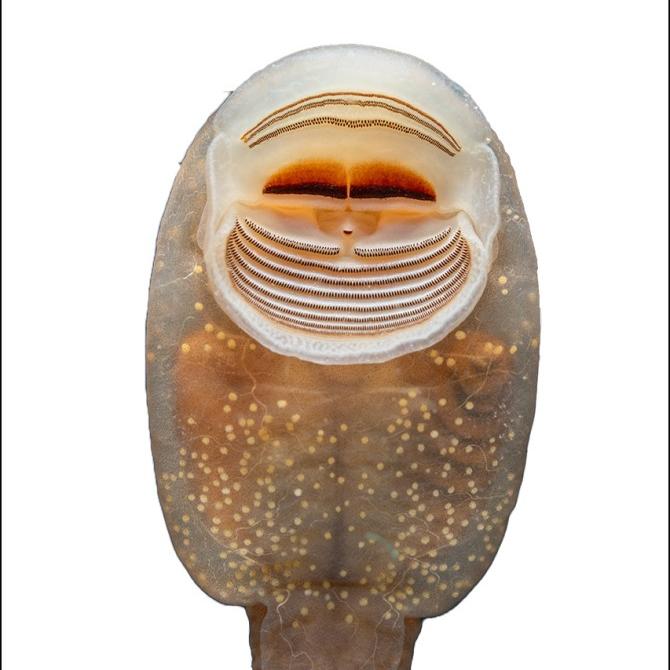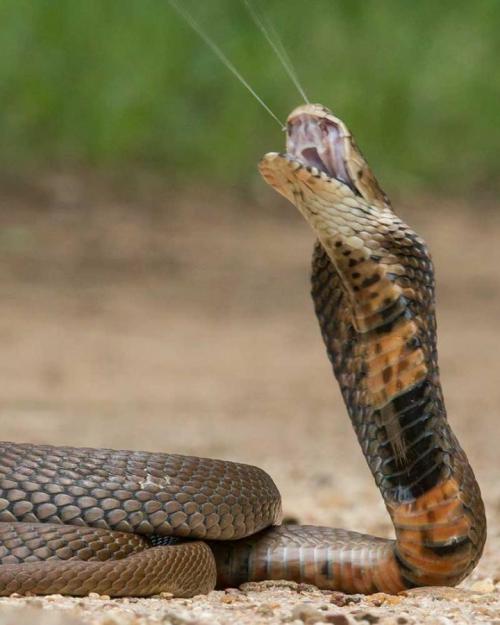A smart prey animal knows to avoid a predatory snake armed with deadly venom. But new research suggests that for some cobras, the venom evolved additional complexity to deter potential enemies– possibly including bipedal, larger-brained hominins like Homo erectus, our extinct close relative.
In “Convergent evolution of pain-inducing defensive venom components in spitting cobras,” published Jan. 22 in Science, an international team of researchers investigating the evolutionary origins of a novel defensive trait by snakes - venom spitting - offer the first evidence that snake venom evolution is associated with defense, rather than solely to help capture prey.
The researchers note that venom spitting would not help protect snakes against the threat of trampling by large ungulates, because of the location of eyes in those hoofed mammals. The threat from bipedal, clever hominins with clubs and projectile weapons, on the other hand, could be effectively countered by spraying venom, the only long-distance pain-inducing defense among all snakes.
The study demonstrates that venom spitting evolved twice in Africa and once in Asia, and “roughly corresponds with the divergence of our ancestors from chimps and bonobos in Africa, and their later migration to Asia,” said Nick Casewell, professor at the Liverpool School of Tropical Medicine (LSTM) in England, who led the study. “While further data is required to robustly test this hypothesis, its intriguing to think that human ancestors may have influenced the origin of this defensive chemical weapon in snakes.”
Co-author Harry Greene, Cornell professor emeritus of ecology and evolutionary biology in the College of Arts and Sciences, has long been conducting comparative studies of defensive adaptations in snakes, including consideration of how snakes influenced primate evolution and vice versa. His 2013 book Tracks and Shadows foreshadowed the new study’s conclusions, speculating on a possible link between convergent evolution of spitting in cobras and the origin of erect locomotion and weaponry in our human lineage.
Greene said that with this new work, “there is ever more evidence of co-evolutionary relationships among our human lineage and many other organisms, including snakes—we are and always have been part of nature.”
The team, led by LSTM’s Centre for Snakebite Research and Interventions, used a variety of laboratory analyses to show that the three independent origins of venom spitting found in cobras and their near relatives corresponded with repeatable changes in venom composition in the three spitting lineages, thus demonstrating strong evidence of convergent evolution – i.e. that evolution has been repeatedly funnelled down the same pathway. The three different groups of spitting cobras were each found to have independently increased the production of PLA2 toxins, which synergistically work with other components to enhance the defensive capabilities of their venom.
The evolution of more potently painful venom likely enables spitting cobras to more effectively defend themselves from predators or aggressors by projecting venom into sensitive eyes, resulting in pain, inflammation and even blindness. That each independent lineage has evolved the same ‘solution’ for defence, represents an exemplary case of convergent evolution in the natural world.
“Venom systems are fantastic natural models for understanding the molecular basis of adaptations because there is a direct and measurable link between the genes associated with a trait, and the ecologically relevant phenotype, i.e. the venom activity and the consequences of that activity,” said Taline Kazandjian, LSTM, co-lead author on the paper.






